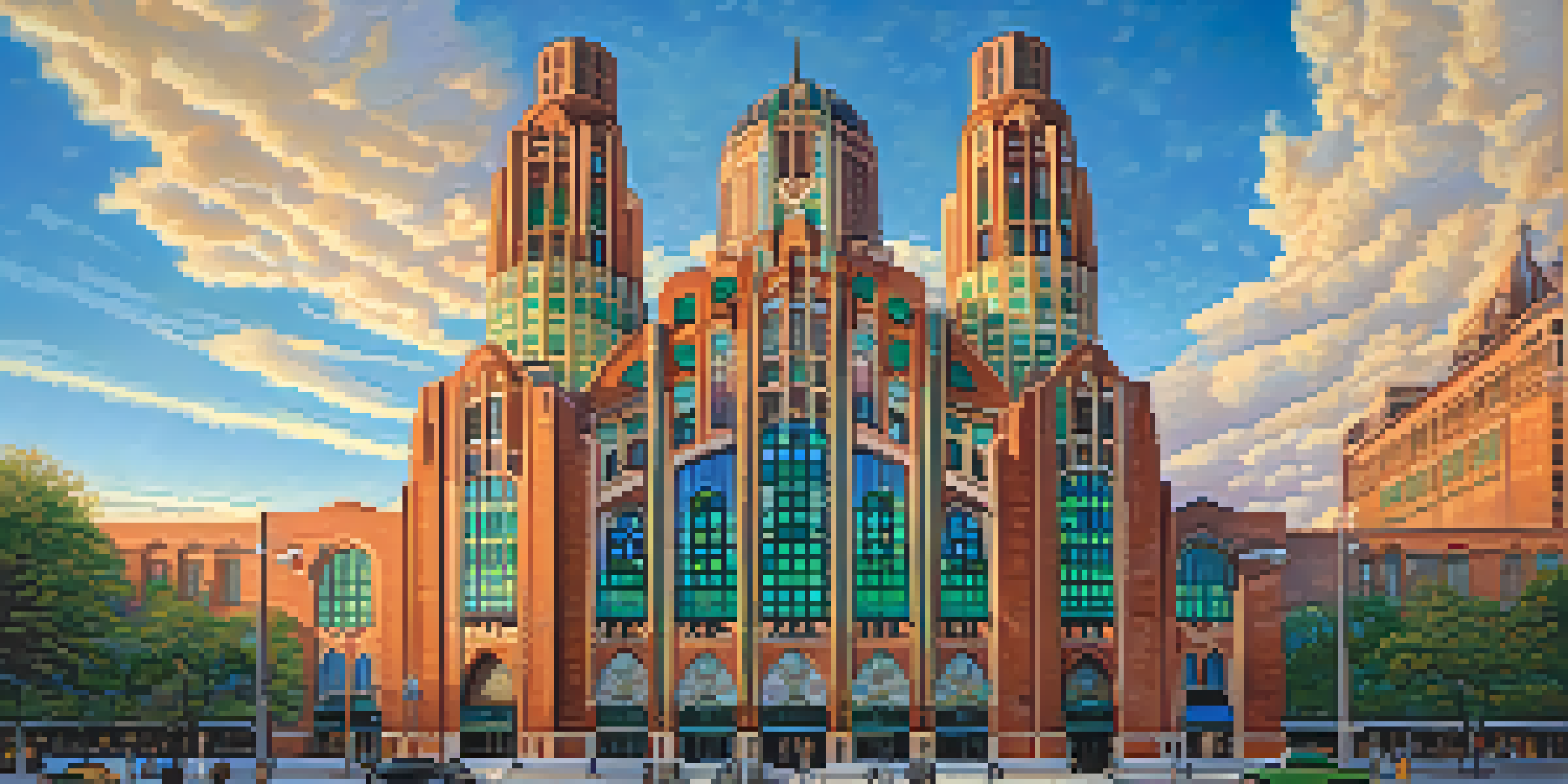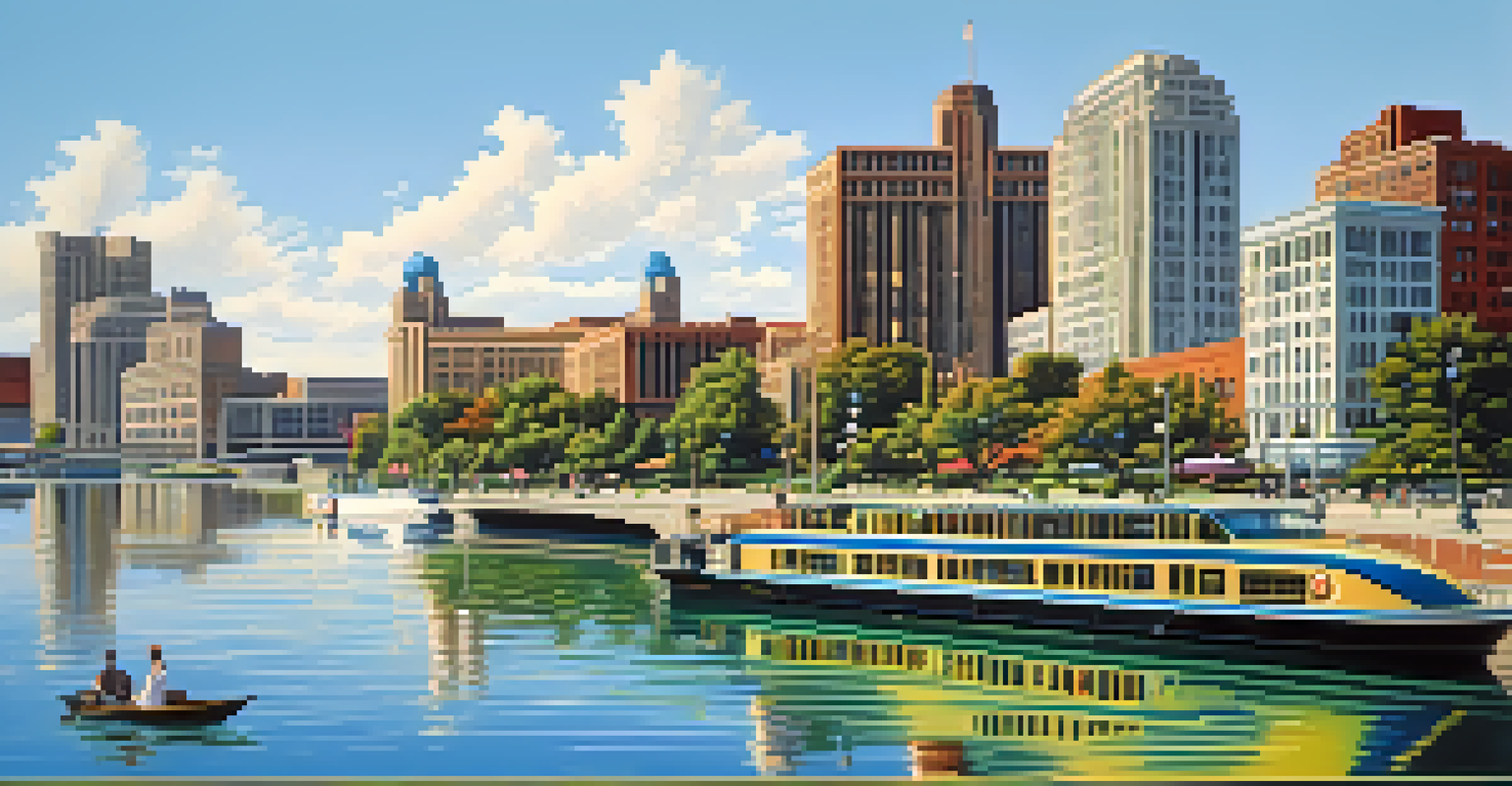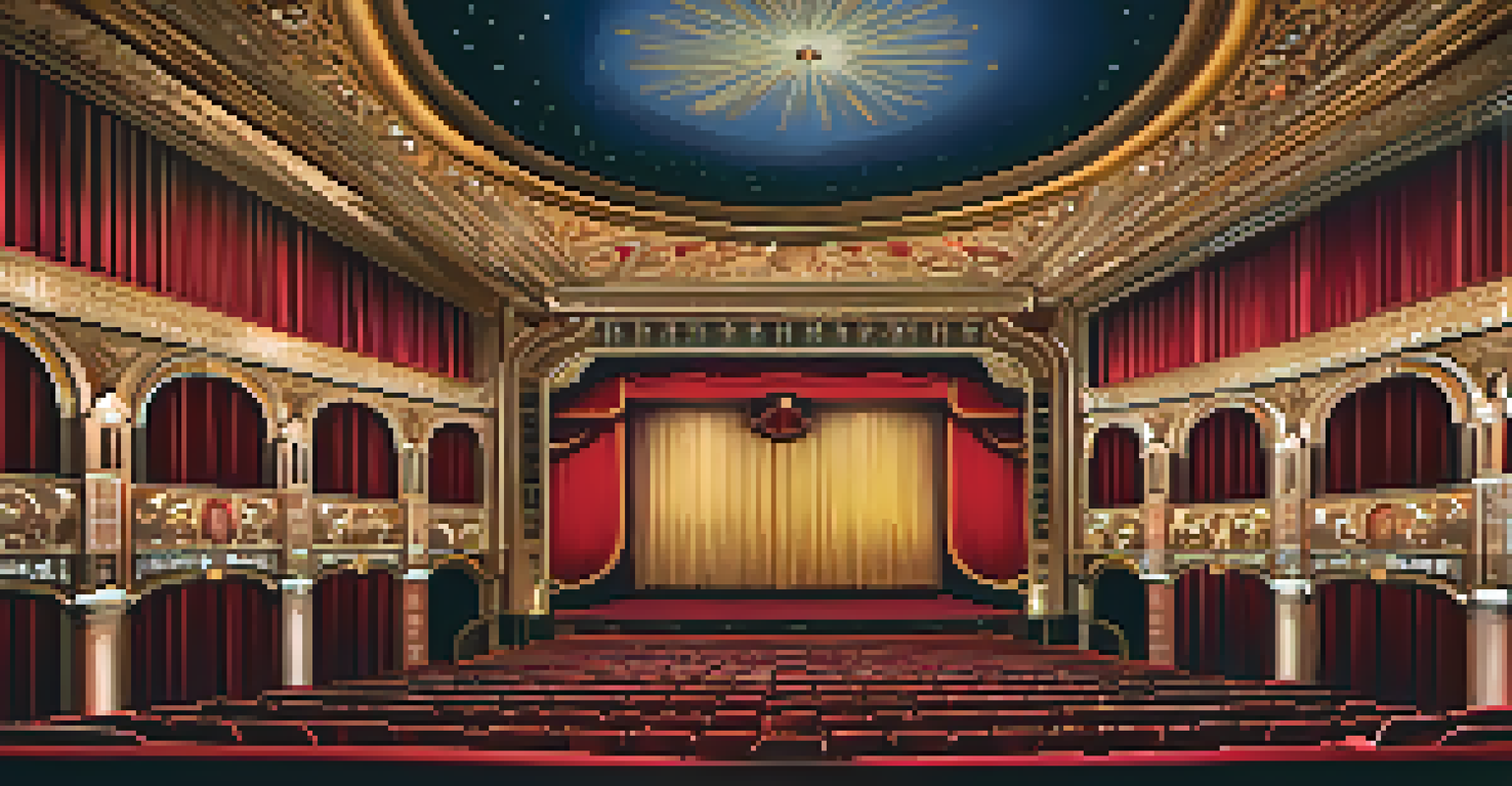Exploring Detroit's Iconic Art Deco Architecture and Its Legacy

An Introduction to Detroit's Art Deco Movement
Art Deco emerged in the 1920s and 1930s, becoming a symbol of modernity. In Detroit, this architectural style reflected the city's booming economy and cultural vibrancy. Buildings from this era showcase geometric shapes, bold colors, and intricate details, distinguishing them from earlier styles.
Architecture is the learned game, correct and magnificent, of forms assembled in the light.
The movement was not just about aesthetics; it represented a shift towards embracing technology and new materials. Structures like the Guardian Building exemplify how Art Deco blended craftsmanship with industrial innovation. As you stroll through Detroit, the influence of this style is palpable, weaving a narrative of hope and progress.
Today, Art Deco architecture stands as a reminder of Detroit's rich history. It's a testament to the city's resilience and creativity in the face of change, inviting both locals and tourists to explore its vibrant past.
Iconic Art Deco Buildings in Detroit
Detroit is home to several stunning Art Deco buildings that capture the essence of the era. The Guardian Building, often called the 'Cathedral of Finance,' features a breathtaking interior adorned with vibrant tiles and murals. This architectural gem is a must-see for anyone interested in design and history.

Another standout is the Detroit International Riverfront, which showcases Art Deco elements in its design. The Riverwalk and surrounding buildings create a beautiful blend of nature and urban architecture, making it a popular spot for both residents and visitors. Here, you can relish in the beauty of the waterfront while appreciating the historical significance of the structures.
Art Deco: A Symbol of Resilience
The Art Deco movement in Detroit reflects the city’s rich history and resilience through its stunning architectural designs.
The Fox Theatre is yet another iconic example, with its lavish interior and exterior that transport you back in time. Known for hosting Broadway shows and concerts, the theater not only serves as a cultural hub but also as a stunning illustration of Detroit’s artistic heritage.
The Influence of Art Deco on Modern Architecture
Art Deco's influence is still felt in contemporary architecture, inspiring new designs that blend old and new elements. Many modern buildings incorporate geometric patterns and bold color schemes reminiscent of the Art Deco style. This fusion creates a sense of continuity, linking the past with the present.
The best way to predict the future is to create it.
Architects often revisit Art Deco principles to create visually striking structures that stand out in urban landscapes. For example, the use of streamlined forms and decorative motifs can be seen in various new constructions in Detroit. This revival highlights the timeless appeal of Art Deco aesthetics.
Moreover, the preservation of Art Deco buildings fosters a unique identity for Detroit. It encourages a sense of place, allowing residents and visitors to connect with the city's history through its architectural landscape. The legacy of Art Deco serves as an inspiration for future generations of architects and designers.
Cultural Significance of Art Deco in Detroit
Art Deco architecture in Detroit is not just about beauty; it carries profound cultural significance. As the city transitioned through industrial growth and economic challenges, these buildings became symbols of resilience and hope. They reflect the artistic spirit of a city that continually reinvents itself.
The movement also coincided with the rise of jazz and the flourishing arts scene in Detroit. Many Art Deco venues, like the aforementioned Fox Theatre, played pivotal roles in the cultural development of the city. They provided spaces for creativity and expression, fostering a rich tapestry of artistic endeavors.
Preservation Efforts Matter
Community and organizational initiatives are crucial for preserving Detroit’s Art Deco heritage, ensuring these iconic buildings endure for future generations.
Today, as Detroit continues to evolve, the legacy of Art Deco serves as a reminder of the city’s vibrant past. It encourages a celebration of diversity in art and architecture, making it an essential part of Detroit’s cultural narrative.
Preservation Efforts for Detroit's Art Deco Heritage
Preserving Detroit's Art Deco architecture is vital for maintaining the city’s historical integrity. Various preservation initiatives aim to restore and protect these iconic buildings from neglect and demolition. Local organizations and community groups work tirelessly to raise awareness about the importance of these architectural treasures.
Additionally, federal and state programs provide funding and support for restoration projects. These efforts not only safeguard the structures but also promote tourism, drawing visitors interested in the city’s architectural history. The revitalization of Art Deco buildings can breathe new life into neighborhoods, enhancing community pride.
Public engagement is crucial in these preservation efforts. Through educational programs and community events, residents can learn about the significance of Art Deco architecture and become advocates for its protection. By fostering a sense of ownership, Detroiters can ensure that these landmarks endure for future generations.
Art Deco and Detroit's Economic Revitalization
The revitalization of Detroit's Art Deco buildings plays a key role in the city's economic growth. By restoring these historic sites, the city can attract businesses and tourists alike, creating jobs and stimulating the local economy. Art Deco architecture has the potential to serve as a powerful draw for visitors seeking unique experiences.
Adaptive reuse of these buildings often results in innovative spaces for retail, dining, and entertainment. For example, historic structures have been transformed into trendy hotels and restaurants, blending modern amenities with classic charm. This approach not only preserves history but also revitalizes neighborhoods, making them vibrant places to live and work.
Economic Growth through Restoration
Restoring Art Deco buildings can stimulate Detroit's economy by attracting tourism and fostering innovative spaces for businesses.
Moreover, the focus on Art Deco in urban planning emphasizes a commitment to heritage and sustainability. By integrating historic preservation with modern development, Detroit is setting a precedent for other cities. This balance can inspire a new wave of urban renewal that honors the past while embracing the future.
Experiencing Detroit's Art Deco: Tours and Events
For those looking to immerse themselves in Detroit's Art Deco scene, guided tours offer an excellent way to explore the city’s architectural gems. Local tour companies often provide insights into the history and significance of various buildings, making the experience both educational and enjoyable. Walking tours, in particular, allow participants to appreciate the intricate details up close.
In addition to tours, numerous events celebrate Detroit's Art Deco heritage throughout the year. Architectural festivals, art shows, and community gatherings highlight the importance of this style in the city's culture. These events create opportunities for residents and visitors to engage with the architecture and meet like-minded enthusiasts.

Whether you’re a history buff, an architecture aficionado, or simply curious about the city, experiencing Detroit's Art Deco is a must. These tours and events not only foster appreciation for the past but also cultivate a sense of community among those who cherish Detroit's architectural legacy.